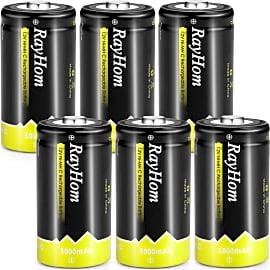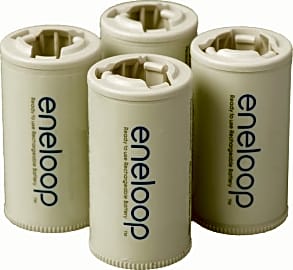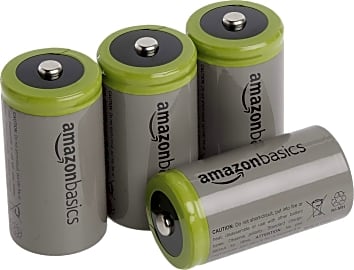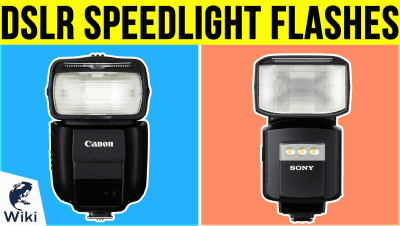The 8 Best Rechargeable C Batteries

This wiki has been updated 38 times since it was first published in January of 2017. What's not to like about something that saves you money, is friendly to the environment, and that you can use over and over again? Every time you choose to use a rechargeable C battery, you keep potentially hazardous disposable versions from becoming trash in landfills, and you'll spend far less on electricity to juice them up than you will on continually buying brand new units. When users buy our independently chosen editorial choices, we may earn commissions to help fund the Wiki.
Editor's Notes
November 12, 2020:
We still think the batteries on this list represent a good investment, but we particularly appreciate the EBL Ready2Use and their 5,000mAh Ni-MH construction. Unlike the Rayovac Recharge Plus and the Energizer C2, these should be appropriate for most high-drain devices, such as a high-powered flashlight, whereas the latter work better for those low-drain, occasional use items.
The Tenergy High Capacity are similar to the EBL model, and tend to cost just a bit less, but run just a touch small. This isn't enough of an issue to make them unworthy of use, however. In a perfect world, all battery compartments and batteries would have an absolutely uniform size, but as most users know, this isn't exactly the case.
And speaking of sizes, we kept the Eneloop C Size Spacers, but be aware that these make it possible to use AA batteries in a device that takes C batteries — the spacers aren't actually batteries, themselves. You might consider this option if you have only a couple of devices that use C batteries, and you're already stocked up on AAs and a good charger. Or, you could look to the newly-added AmazonBasics 4 Pack, which is one of the more budget-friendly choices you'll find.
March 09, 2019:
Rechargeable batteries are a worthwhile investment if you rely on battery-powered devices. You can use them over and over again instead of just throwing them away as you would with alkaline units. In our selections, we were intrigued to find that relatively little-known brands, such as Odec and EBL, have larger capacities in milliampere hours than some of the better-known options like Energizer.
Special Honors
The Battery Eliminator Store C Eliminator Even rechargeable batteries have a finite number of uses, but The Battery Eliminator Store C Eliminator relies on mains power, so it can be used virtually indefinitely. Of course, this means when you use it, the device has to remain basically in one spot, since it must be plugged in, which may or may not be desirable. batteryeliminatorstore.com
It’s What’s Inside That Counts
They also happen to be among the least expensive options on the market.
If you’re in the market for rechargeable batteries, you’ve no doubt encountered some strange initialisms that might be throwing you for a loop. You’ll see things like Ni-Cd or Ni-MH used to describe the rechargeable batteries on the market, and, as convenient as it would be if they didn’t matter, these little codes bear significantly on the performance of the batteries you buy, and their ability to function in certain electronics.
But what do those letters actually mean? Well, some of those letters come to us from the periodic table, and they represent the chemical elements used in a given battery’s electrodes. The two most common types you’re liable to encounter when shopping for rechargeable Cs are Nickel-Metal Hydride and Nickel-Cadmium.
Nickel-Cadmium batteries are particularly good at maintaining a charge when not in use, so they’re ideal for users who want to put them in something that might not see a ton of use, or for users who are forgetful about recharging their batteries. They also happen to be among the least expensive options on the market. It’s not all good news for Ni-Cd batteries, however. These batteries sometimes suffer from a particular phenomenon known as the memory effect, in which recharging a battery that hasn’t completely died will cause it to lose a bit of its maximum charge capacity. In other words, a battery that lasted 100 hours could suddenly only last you 95 hours if you recharged it before it was fully depleted.
Nickel-Metal Hydride batteries are far less likely to suffer from the memory effect, which is one of their advantages over Ni-Cd batteries. Another advantage, which is also potentially the most important, is the Ni-MH’s maximum charge capacity. Essentially, these batteries can hold more juice, so they’re ideal for tools that demand a more significant energy draw like a high-end DSLR speedlight. The downside to Ni-MH batteries is that they tend to boast fewer total cycles than their Ni-Cd counterparts, meaning you’ll likely have to replace them sooner. They also tend to be more expensive than Ni-Cds.
What To Look For When Buying Rechargeable Cs
Shopping for rechargeable C batteries will have a lot to do with where those batteries are headed. As we discussed above, there are certain benefits and disadvantages to the two main types of rechargeable C batteries on the market, and knowing how to manage those features will go a long way toward ensuring you make the right purchase.
If you’re planning on using your new rechargeables in a device that has a high power draw, even if that draw only comes in bursts, you’ll want to spring for Ni-MH batteries.
If you’re planning on using your new rechargeables in a device that has a high power draw, even if that draw only comes in bursts, you’ll want to spring for Ni-MH batteries. These will give you the most bang for your buck, and they’ll also ensure proper functioning of high-end electronic equipment.
Customers looking to simply keep their remote control and video game controllers juiced up can get away with Ni-Cd batteries. Given the use frequency of things like game controllers in particular, the superior total cycle lifespan of this battery type will come in handy.
You’ll also notice that batteries tend to boast their mAH, which stands for milliampere-hours. This is a way of determining how long a battery will last before it needs to be recharged (or thrown out in the case of disposables). It correlates to how many milliamperes of power a battery can provide over the course of one hour. So, if a device consumes an average of 80 mAH, and your battery is rated at 1900 mAH, it should last 20 hours of use before needing to be recharged.
These types of designations, from the chemical specifications to the power density, are generally better markers for the potential success of a battery than its brand name, especially now that global manufacturing practices have made excellent technologies available to producers whose names you might not recognize. In other words, believe the specs, not the hype, even if you think that little Energizer bunny is adorable.
Let Your Batteries Go That Extra Mile
When using rechargeable batteries for any application, it’s important that you always have a fully charged set on hand as a backup for any activity. Ensuring that your batteries are charged up for a given use is vital, but it’s equally essential that you employ some best practices and that you understand how to spot a battery that’s approaching the end of its life.
Because Ni-Cd batteries are more likely to succumb to the memory effect described above, it’s a smart idea to let them die completely before recharging them.
For starters, make sure you have a good charger. Many of the rechargeable C batteries on the market don’t come with chargers, but there are units out there dedicated to this size, as well as those that will fit C batteries in addition to a slew of other sizes. Be sure to test your charger regularly at every point of contact to ensure there’s juice flowing that will perform the charging no matter where you place your dead cells.
You may have heard that it’s important to let your batteries die completely before recharging them again. In some cases, this is true, and in others it’s false. Your cell phone battery? Probably not the best idea to let it die before every charge. Your rechargeable Cs? Well, it depends. Because Ni-Cd batteries are more likely to succumb to the memory effect described above, it’s a smart idea to let them die completely before recharging them. Ni-MH batteries are less susceptible to the effect, so you’re free to recharge them from whatever state you like.
Finally, it’s important that you know when your rechargeable batteries are nearing the end of their lives. Otherwise, you could pop in a pair you'd been charging all night and have them die on you after just a few minutes. The most reliable way to see if your rechargeable batteries are dying is to track their charge time. When a rechargeable battery is no longer able to hold its full charge, it will take less time for your charger’s indicator light to tell you that it’s full. If your rechargeable batteries are recharging at an alarmingly fast rate, they’re likely headed for the recycling plant.













